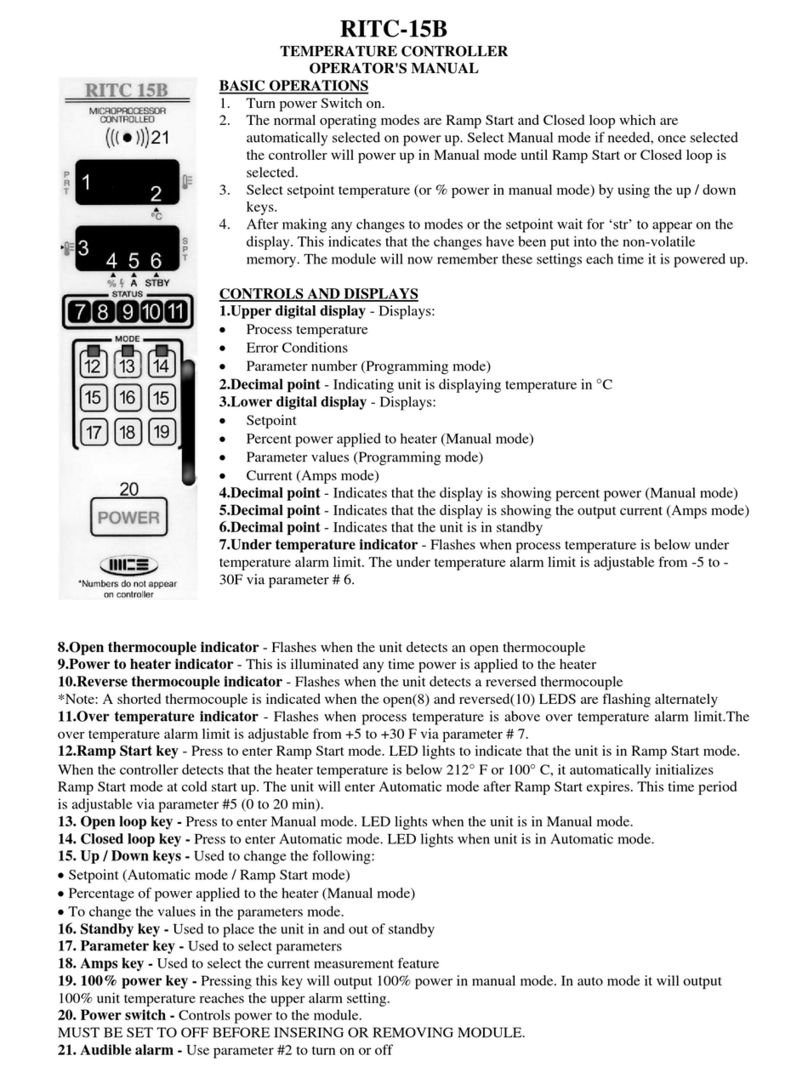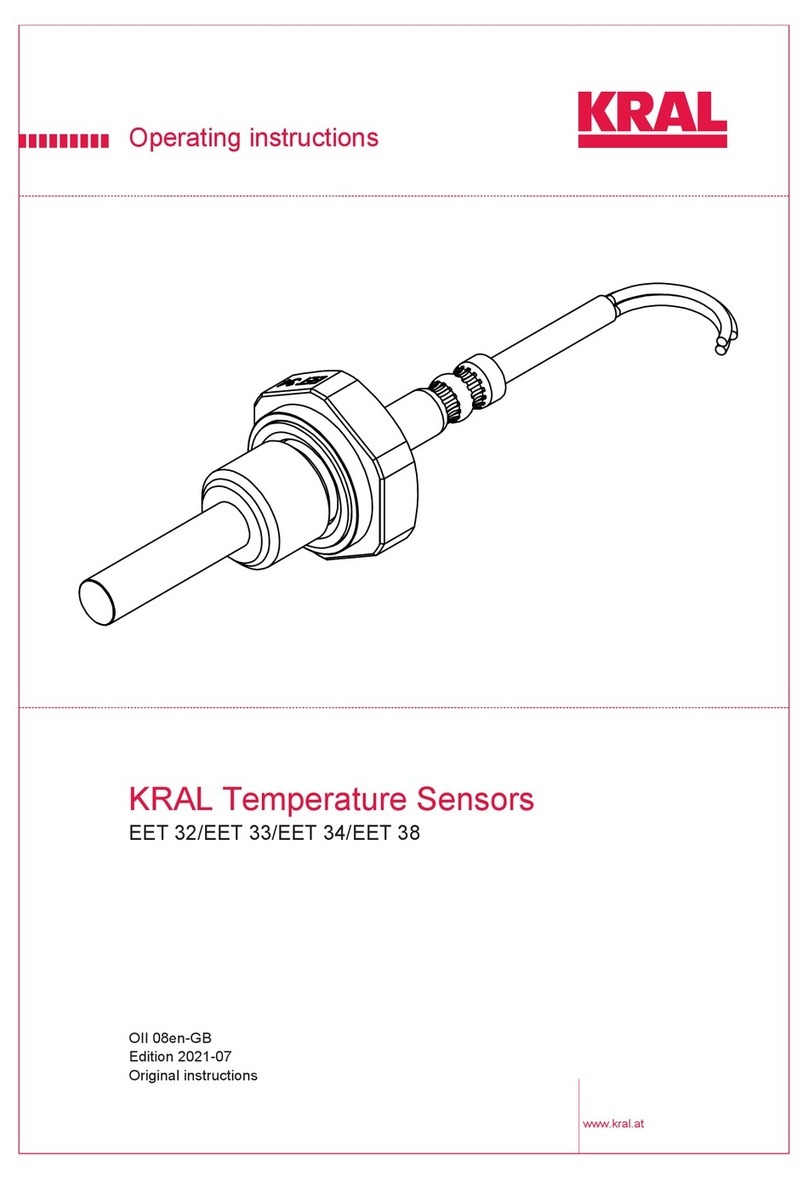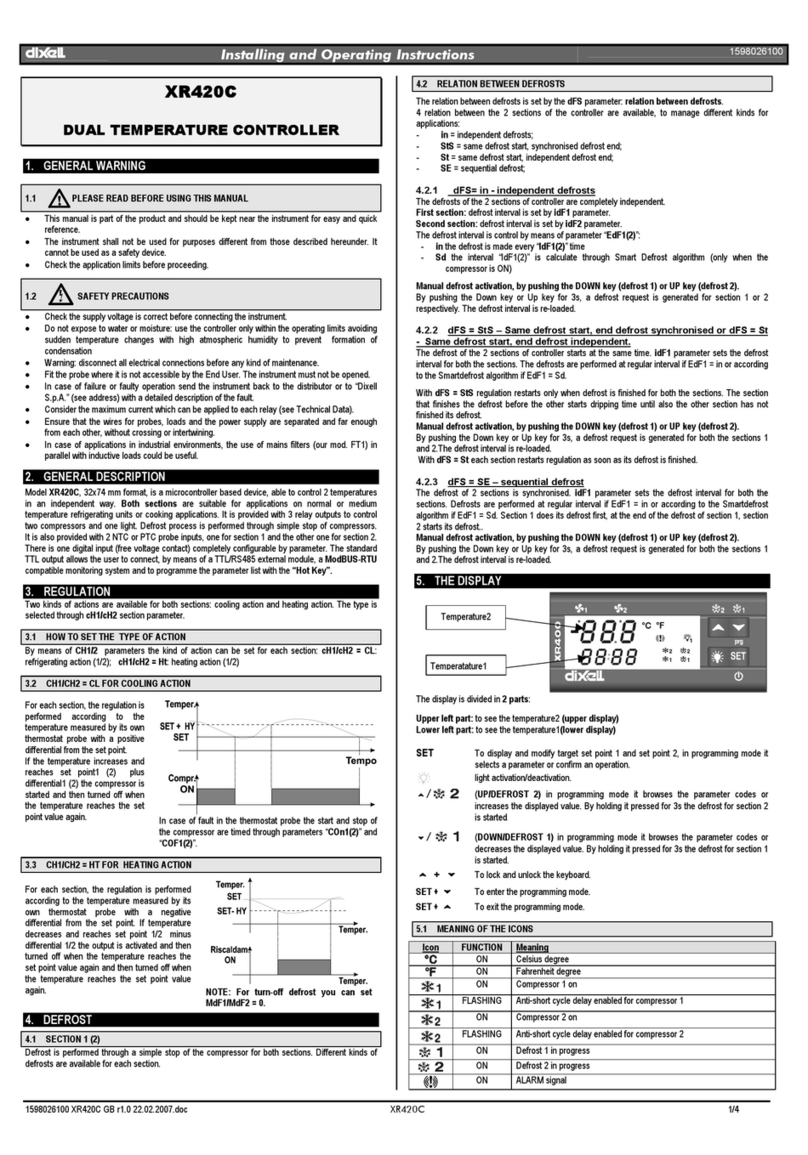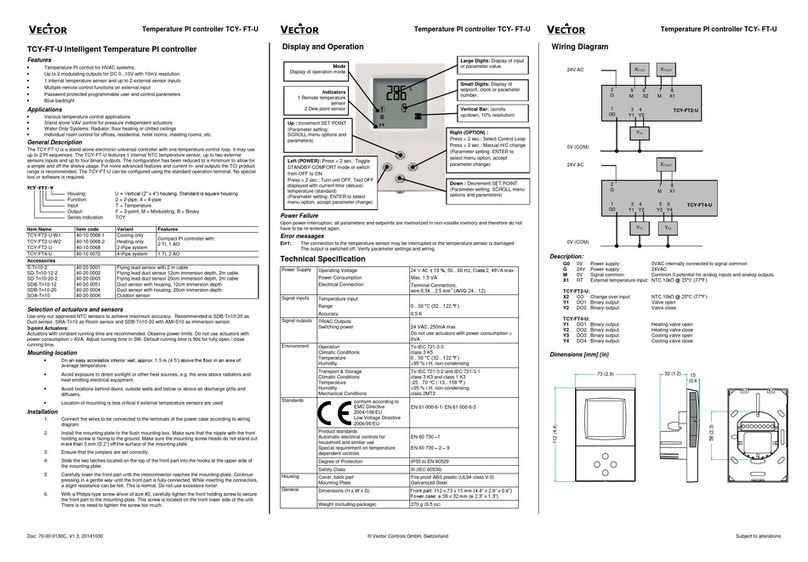
1
WARNING
Each single operation done on the unit, either installation or maintenance, must be done without main supply on the unit and
external loads. Such operations are permitted only by skilled workers. Industrietechnik is not responsible for possible damages
caused by an inadequate installation and/or by removed or exchanged security devices. The thermostat must be mounted in
places far from heat sources and freely accessible for air convection at a height of approx. 1,5 m. Do not install the thermostat
on particularly cold or heat walls.
APPLICATION
The series of thermostats DB-TA-33A allow the temperature control in buildings interiors for heating, air conditioning with 2 or 4
pipe systems with proportional integral regulation. The unit has one 0..10 V output (2 pipe system) or two 0..10 V outputs (4 pipe
system) according to conguration choosen and it is possible to have:
- in 2 pipe system, local or centralized changeover by a single wire, or automatic changeover according to temperature of water
sensor mounted upstream the valve. In 4 pipe system, the changeover is done automatically according to room temperature.
- switches on/off and 3 speeds (DB-TA-33A-13A) for power on and off the unit and fan-coil
- economy remote function with a single wire
- autotuning function with the use of remote sensor only
The unit has a display with 3 characters for visualizing room temperature, parameters setting and 2 keys +-for parameters setting.
Instruction for setpoint setting (level 1):
The display indicates the room temperature.
Push the key +the message “SEt” is visualized on the display.
Push the key +again one time, the value of the setpoint is visualized on the display.
To modify the setpoint value push the key +or -to increase or decrease the value.
To save the modications done wait for 4 s, the message “SEt” is then visualized again on the display. Wait for another 4 s until
is visualized the room temperature on the display. The parameters are then saved and the unit is ready to do the regulation.
Instruction for other parameters setting (level 2 or 3):
To access the parameters of level 2 or 3 proceed with the following procedure:
Push - until the message “PAS” is visualized on the display (several seconds).
Push +the value 6.0 appears on the display.
Push the key +up to visualize 6.5 (level 2) or 8.5 (level 3).
Wait for 4 s for visualizing the name of the rst parameter of level 2: “tiP” or level 3: “LEA”.
At this point it is possible:
- to move in the list of the parameters
- to modify a certain parameter.
To move in the list of parameters, push the key -when the names of them are visualized. To modify the value of one of them
move to the name of the parameter to change and hit the key +to see the value on the display.
Then push the key +or -for increasing or decreasing it.
To return to the list of parameters wait for 4 s until is visualized the name of the parameter again.
To save modications done to parameters wait until on the display appears the room temperature again (maximum 8 seconds).
INDICATIONS AND ALARMS
· Flashing message “SEn” on the display indicates:
open sensor or short circuit on it.
· Message “ C” alternating with temperature indicates:
Cooling mode selected without economy function (setpoint = SEt see parameters).
· Message “ H” alternating with temperature indicates:
Heating mode selected without economy function (setpoint = SEt see parameters).
· Message “EcC” alternating with temperature indicates:
Cooling mode selected with economy function (setpoint = SEo see parameters).
· Message “EcH” alternating with temperature indicates:
Heating mode selected with economy function (setpoint = SEo see parameters).
When the unit is switched on during stabilization phase the following messages (“15.0“,“14.0“,... “10.0“, “P-I”) appear on the display
before seeing the value of temperature. If the message “Err” is then visualized instead of temperature, advise technical assistance.
Proportional integral
temperature regulator P.I. DB-TA-33A




























